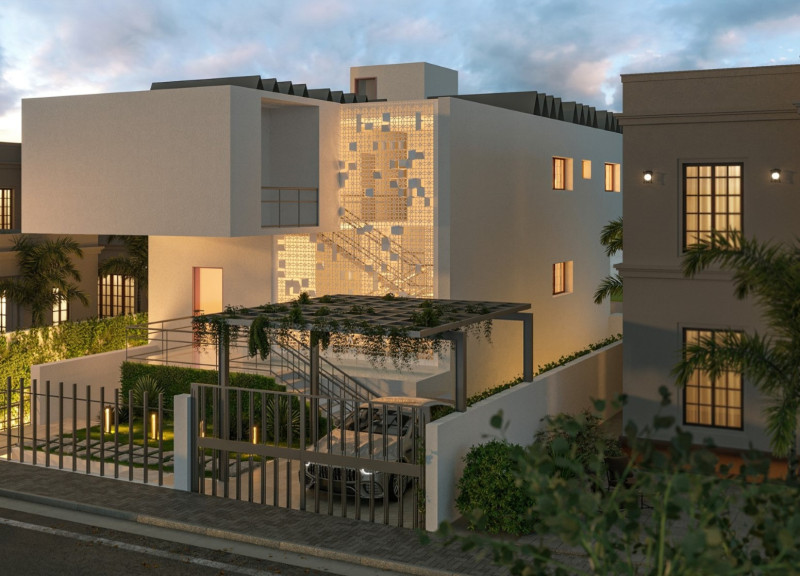5 key facts about this project
The design incorporates a variety of functional spaces, distributing them across three levels: the Lower Ground, Upper Ground, and First Floor. Each level serves distinct purposes, facilitating both private and communal interactions. Key features include a Majlis on the Lower Ground, which serves as a traditional gathering space, and a double-height dining area on the Upper Ground that promotes social connectivity. The incorporation of water features throughout the residence provides a natural cooling effect, enhancing the comfort of interior spaces.
Attention to materiality characterizes the "Desert Rose." The project employs Glass Reinforced Concrete (GRC) for structural elements, Autoclaved Aerated Concrete (AAC) for walls, and a mix of porcelain and ceramic tiles for flooring and bathrooms. These materials not only contribute to the durability of the building but also ensure thermal efficiency, which is essential in hot desert climates.
Design Considerations in Climate and Culture
The architectural response to climate is a focal point of the "Desert Rose." Strategic placement of windows and the use of Mashrabiya screens facilitate natural ventilation and provide shade, reducing reliance on mechanical cooling systems. This approach aligns with sustainable design practices, acknowledging the significance of passive cooling in desert environments.
The integration of green walls and landscaped areas within the property further enhances the connection between built and natural environments. These features not only contribute to the aesthetics but also support biodiversity and promote environmental resilience.
Unique Transformability and Adaptability
One of the standout features of the "Desert Rose" is its emphasis on space transformability. The design allows certain areas of the home to have multiple functions, which is particularly advantageous for urban dwellings where space may be at a premium. This flexibility is evident in spaces that can transition from casual lounges to home theaters, catering to the dynamic needs of the family.
Furthermore, the compact design reduces the building's footprint while maximizing vertical space, showcasing how contemporary architecture can evolve through innovative thinking.
For those interested in a deeper understanding of this project, exploring the architectural plans, architectural sections, and architectural designs will provide valuable insights into the structural and aesthetic considerations that shaped the "Desert Rose". Additional architectural ideas illustrated in the project presentation highlight the critical relationship between culture, climate, and modern design principles.


























